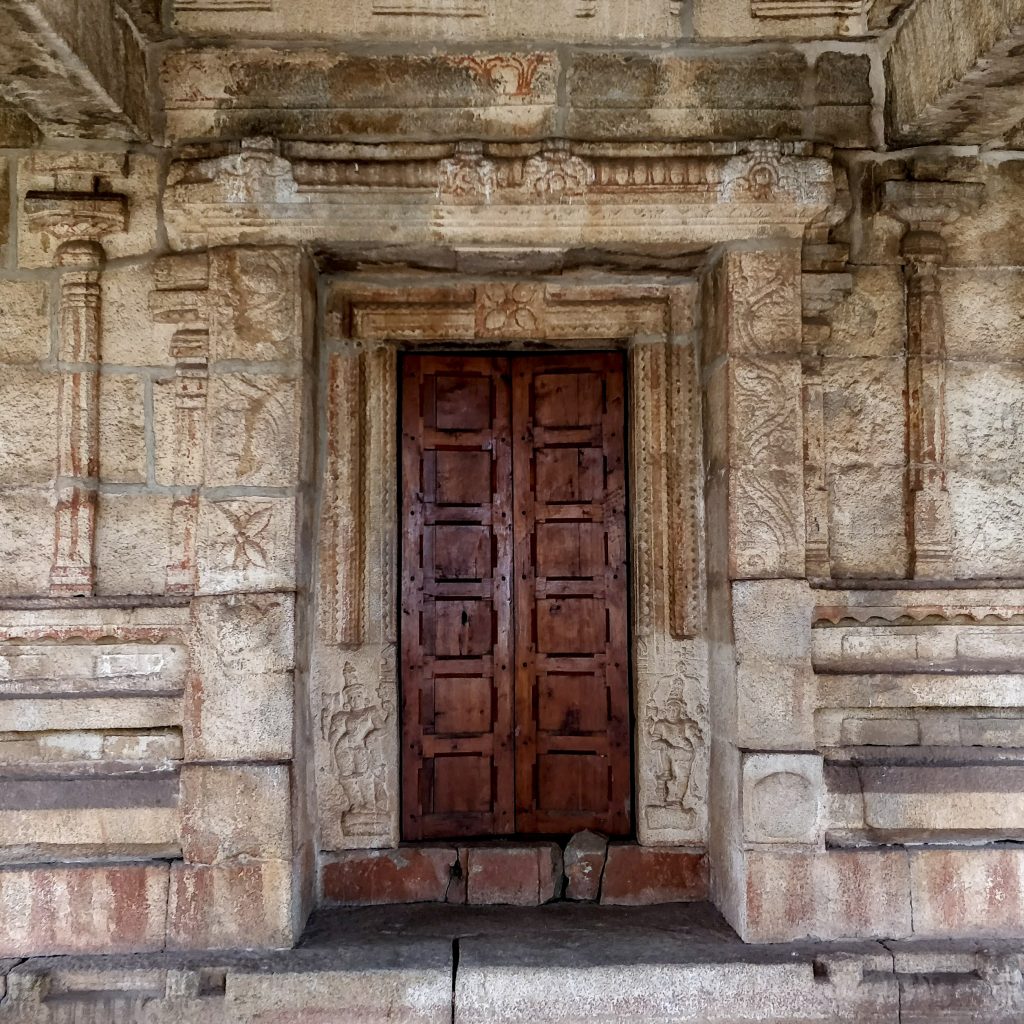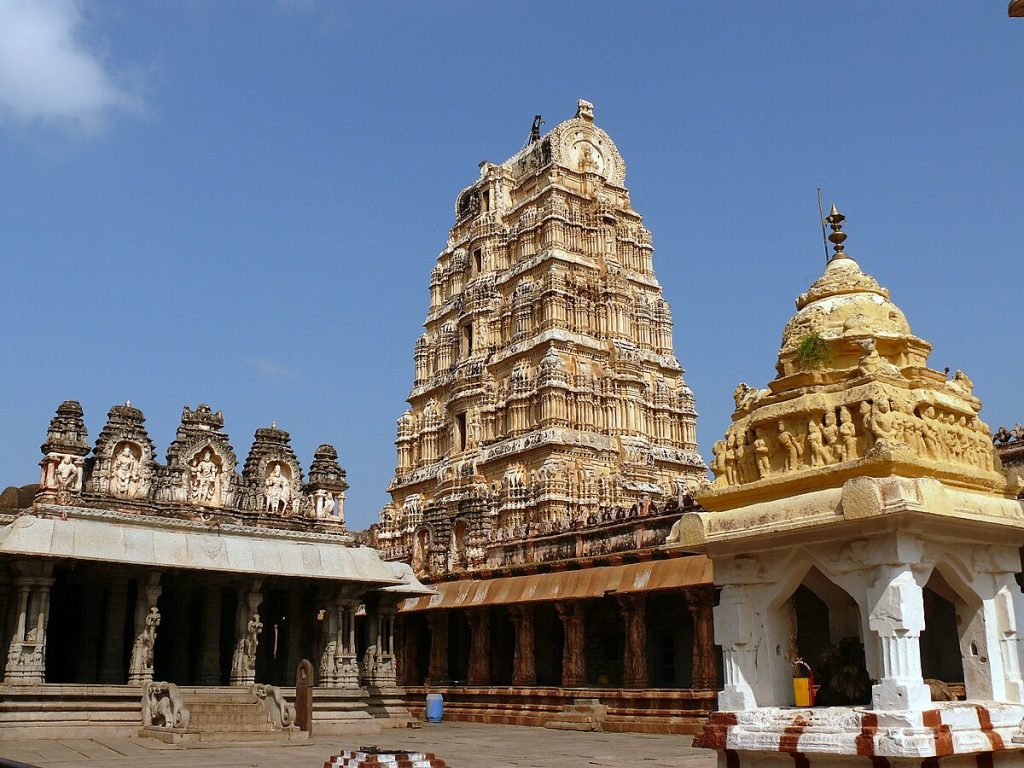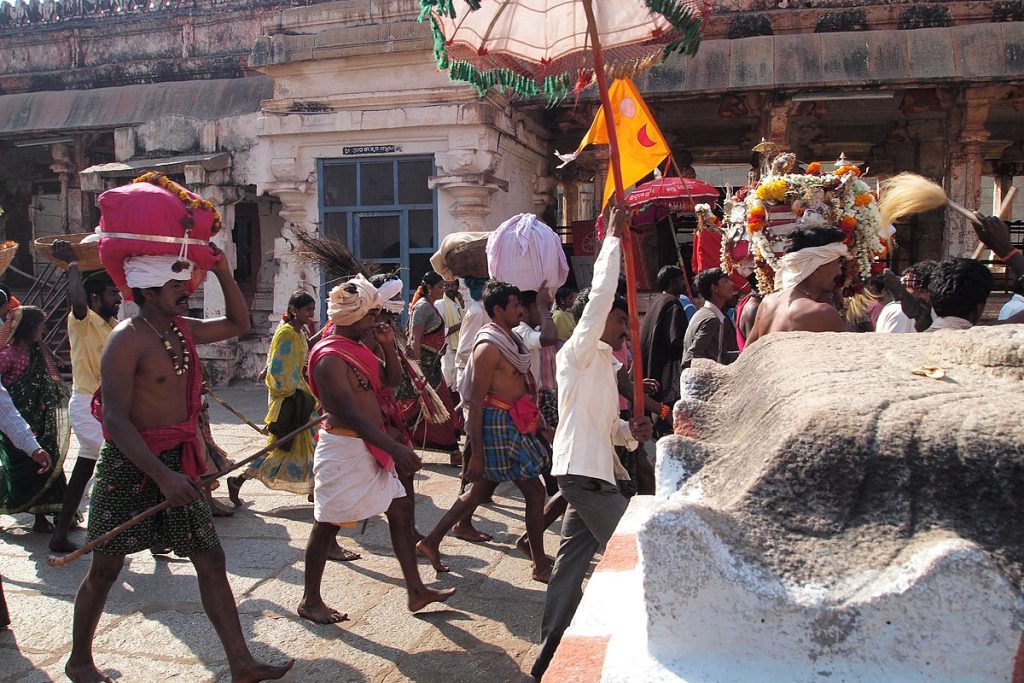Nestled alongside the Tungabhadra river in North Karnataka, Hampi is truly a destination where the past comes alive. Recognized as a UNESCO World Heritage Site for its well-preserved ruins and monuments, Hampi offers travelers an enchanting glimpse into the glory days of the Vijayanagara empire that once ruled supreme over Southern India.
From ancient temples and royal complexes that stand testament to the richest kingdom of its time, to the iconic hilltop boulders that punctuate its surreal landscape, Hampi is history, mythology and nature all rolled into one.
In this blog, we uncover Hampi’s enduring mysteries – from the forgotten tales of its iconic monuments, to geological wonders that resemble mythical creatures, and age-old myths rooted in its sacred terrain. As you read on, get ready to be transported into a world where past and present, facts and fiction, seamlessly overlap.
Unveiling the History of Hampi

Fourteenth century AD marked the birth of the mighty Vijayanagara empire that would dominate Southern India for over two centuries. Its capital city located in the region we now know as Hampi soon developed into one of medieval India’s most prosperous and trading hubs.
Blessed by the Tungabhadra river that ensured bountiful harvests, and strategically located far from India’s northern frontier, the Vijayanagara rulers expanded their territory exponentially through successive military conquests. As wealth flowed in, so did artists, architects, traders and artisans flocking in to contribute to the empire’s growing splendor.
By early sixteenth century, Hampi-Vijayanagara was reputed far and wide for its lavish temples, thriving bazaars and extravagant architecture. Travellers’ accounts speak of ornately carved pillars, shimmering pavilions and majestic gateways, all culminating to offer spectators a visual feast.
However, this apex of power and grandeur would soon witness a dramatic reversal in fortune. In 1565, the Vijayanagara army faced defeat at the hands of the Deccan Sultanates forces. Hampi was subsequently captured, pillaged for months and left in ruin. Yet, the imposing structures that managed to withstand destruction, continue to narrate the tale of Hampi’s golden era as visitors marvel at them to this day.
Exploring the Iconic Ruins of Hampi
Stepping into Hampi is like entering an extensive open-air museum, albeit one with a sublime natural setting. Dotting emerald green paddy fields and rugged boulder hills, stand Hampi’s iconic architectural remnants. The enigmatic aura is enhanced by the sense that not all mysteries have been unraveled as yet.
Let’s uncover some prominent landmarks.

Virupaksha Temple
Dating back to the 7th century AD, the Virupaksha temple is considered Hampi’s oldest surviving monument. While its core structure remains intact, renovations were carried out by successive Vijayanagara rulers over the centuries. Part of a sprawling complex, the highlight here is a colossal 160-foot high gopura (tower gateway) that forms Virupaksha’s imposing entrance.
Intricately embellished with sculptures from Hindu mythology, the gopura’s 9-storied pyramidal shape has become Hampi’s most iconic frame, probably only next to its giant boulders! Take time to examine the erotic carvings along the outer walls, hinting at the temple’s association with Shakti worship related to fertility and procreation.
Vittala Temple Complex
Easily star attraction amongst Hampi’s ruins is the Vittala temple and its iconic stone chariot. Though now solitary, the Vittala complex originally consisted of a sprawling array of halls, sanctums, markets and dwellings. What captures attention immediately are its musical pillars reverberating with the sounds of stone!
Feel the intricately etched stone resonate when tapped gently to emanate varied musical notes – an architectural marvel displaying advanced engineering skills. The highlight however is the monolithic stone chariot featuring ornately carved wheels that could freely rotate in the past. Photographers flock here at sunrise and sunset as the chariot glows under the soft light.
Lotus Mahal
Imagine a structure shaped like an inverted lotus bud, towers rising symmetrically on all sides and airy domes supported by arched corridors. This describes the Lotus Mahal perfectly, constructed as a gathering pavilion for Vijayanagara’s queens and princesses.
An amalgamation of Hindu and Indo-Islamic architectural inclinations, the Lotus Mahal is Hampi’s most stylized structure made entirely of stone. Grand yet graceful, its harmonious proportions exemplify the architectural mastery achieved during Hampi’s heydays. Photograph its multiple arched entranceways and explore the galleries within to admire how elaborately ornamented each section is.
Marveling at the Boulders of Hampi

Hampi’s otherworldly landscape is characterized by a terrain of giant boulders precariously perched and heaped over one other, forming natural rock formations unseen anywhere else in the world. Scientifically classified as granite rocks formed millions of years ago, these gargantuan rock structures have shaped the culture and mythology intrinsic to Hampi over centuries.
Let’s look at Hampi’s three major hills that dominate its topography.
Hemakuta Hill
Right beside Virupaksha temple stands the Hemakuta hill, regarded sacred for its collection of early Vijayanagar-era temples and prehistoric monuments scattered across its sheet rock face. Among the most remarkable structures is a monolithic model of Hampi’s Kadalekalu Ganesha, so realistically carved that it resembles an elephantine god literally embedded within rock!
Climb up the easy steps to witness spectacular sunrises and sunsets over Hampi’s landscape. The sprawling vista with Virupaksha temple towers on one side and the scenic Tungabhadra on the other, frames the Hampi’s grandeur beautifully for your camera!
Matanga Hill
At Hampi’s center lies Matanga hill, rising up as one of the highest peaks. Ascending the rocky hill is recommended for witnessing Hampi’s ruins from a vantage aerial view. Watch architectural jewels like Vittala temple glow in the sunrise while tiny temples and archways reveal themselves among patches of foliage as you go higher up.
If venturing during late afternoon, don’t miss the sunset as the Tungabhadra turns golden, mirroring the color of Hampi’s ancient stone structures scattered far below amidst the boulder terrain.
Elephant Stables
At the foothills below Matanga sits a surviving relic of Hampi’s royal indulgence – the Elephant stables used in the past as parking garage for royal elephants! A series of domed chambers with higher center room forms this impressive structure.
Notice the openings on the sides that indicate individual compartments for elephants. Venture inside the least damaged sections to examine how elaborately finished the interior must have once looked – an easy indication of Hampi’s prosperous era.
Immersing in Mythical Tales of Hampi

Beyond Hampi’s visible monuments and gigantic rocks, lies an equally magnificent realm – its collection of myths and folklore going back centuries. Hampi continues to remain deeply immersed in mythical legends related to resident gods, goddesses, demons and fabled locations linked to Hindu epics and Puranas.
Let’s immerse in this magical world of myths rooted in Hampi’s spiritual fabric over millennia.
Legends of Anjaneya Hill
Mythology and geology converge atop the famous Anjaneya hill, regarded as the mythical birthplace of Hanuman – the revered monkey god who led Rama’s army to defeat Ravana as per the Ramayana epic. A small temple located here is dedicated to Lord Hanuman where his mother Anjani worshipped and eventually gave birth to him.
Legend has it that Hanuman was born in a cave nestled somewhere within these hills. Added excitement comes from an ancient cliff that displays mysterious marks resembling a giant leap – believed to have been Hanuman’s footprint leaping towards Lanka! Exploring the area awakens your imagination to visualize Hanuman’s adventures as described for centuries.
Sugriva’s Cave
Another location wrapped in mythical legend is Sugriva’s cave – site where Sugriva hid out during his conflict with his brother Bali before soliciting Rama’s assistance. Mythology portrays this natural cave formed between Hampi’s boulders as the haven where Sugriva stayed while establishing his friendship with Rama and outlining plans to locate Sita in Lanka.
Though devoid of any embellishment or signage, a visit here feels nothing short of surreal when the mere idea that Lord Rama himself may have conversed at this very spot according to sacred Hindu texts!
Pampa Sarovar
Hampi’s sacred Pampa lake called Pampa Sarovar finds repeated mention in mythology as site of many mythical events. One legend narrates it as the arena where goddess Durga battled the notorious buffalo demon Mahishasura in the gods vs demons tale. The lake itself represents Parvati, consort of Lord Shiva while its tributary channels signify goddess Saraswati.
Mythical accounts also describe Pampa Sarovar as the ceremonial site where Lord Shiva married Pampa, an incarnation of Parvati, giving the lake its name. Though ancient, a bath here is considered holy, sweeping visitors into Hampi’s spiritual realm vibrant with mythology.
Experiencing Hampi’s Vibrant Culture

While Hampi’s temples, ruins and boulders offer a compelling historical and architectural sojourn, its living cultural traditions equally showcase continuity of Vijayanagara’s rich legacies. Immerse in Hampi’s local festivals, crafts and music that infuse Hampi with a vibrant spirit beyond its ancient monuments.
Let’s experience what makes Hampi an unforgettable cultural journey.
Festivals
Hampi’s festival calendar will immerse you deep into revelry and rituals still practiced here traditionally for centuries. Dasara here brings impressive processions of locals dressed as warriors and mythical characters, commemorating Hampi’s power and glory.
Equally captivating is the annual Purandaradasa Music Festival when eminent musicians converge to perform soulful Carnatic compositions. The atmosphere comes alive with devotional fervor as notes resonate among Hampi’s temples lit up brightly against night skies.
Markets and Shopping
No trip here is complete without browsing Hampi’s bustling markets for fetching souvenirs. From exotic jewelry pieces inspired by temple motifs, to traditional handicrafts and fabrics, there is abundance here to take back a part of Hampi with you!
The street markets near Virupaksha temple makes great hunting for embroidered textiles, leather puppets and other locally crafted mementos at reasonable prices if you can bargain! For lovely interpretation of Vijayanagara art, check out ceramics with handpainted battled scenes and surreal motifs.
Cuisine
While in Hampi, tasting the local flavours is a must to complete your cultural experience! Opt for small eateries lining the road to Virupaksha temple for authentic local meals like Puliyogare rice delicacy, crispy Medu Vada fritters and spicy vegetable curries typically served on banana leaves in the traditional way.
Don’t miss out the iconic boulder spotted dosa, an innovative twisted avatar of the popular South Indian crepe made with a dash of rich ghee! For dessert, try the unusual yet delectable Papeda – a type of rice and coconut pudding like no other!
Planning Your Hampi Adventure
With Hampi offering such prolific history, scenery and experiences, planning a personalized itinerary helps maximize your time to make the most of your travel here. This practical guide will help ease your Hampi visit.
Ideal Time to Visit
Hampi offers moderate climatic conditions year-round which aids exploration. However October to February is considered best weatherwise due to relatively pleasant day temperatures and lesser chances of rainfall that can hamper outdoor sightseeing plans.
Getting to Hampi
Well connected via overnight trains and comfortable bus services, Hampi offers ease of access whether opting for public or private transportation modes. The nearest airports are located in the cities of Hubli and Bellary, both under 3 hours drive from Hampi.
Getting Around
Hampi’s attractions are well spread out and not walkable entirely unless you have weeks at hand! Bicycles and mopeds are convenient for zipping between sites and climbing hills. Mini-bus shuttles also connect key areas while taxis are ideal for comfort. Walking is suitable for markets and riverside zones in Hampi village center.
Stay and Eat
From lodges and homestays nestled amid paddy fields to riverside resorts in heritage settings and boutique hotels, Hampi offers varied stay styles suiting budget and comfort preferences. While local South Indian and North Karnataka style cuisine dominates, multi-cuisine restaurants have now emerged too.
Top Activities
While sightseeing tops itineraries, Hampi offers much beyond just monument hopping. Opt for walking tours, join photographers on sunrise shoots, take boat rides for panoramas, learn rock climbing, immerse in local festivals…the list is long! Customizing experiences as per your interests helps make Hampi all the more memorable.
Must Know Tips
- Carry sun protection, hats, shades and comfortable footwear always
- Carry small change when visiting temples for entry charges and camera fees
- Prebook hotels in peak season to avoid last minute hassles
- Travel during early mornings and close to sunset for avoiding harsh sun
- Hire registered guides to maximize learning and safety at sites
- Respect local traditions when visiting temples and monuments
Conclusion
Our journey through Hampi’s rich legacy makes it abundantly clear why this magnificent site continues to captivate all who visit it. Beyond just earning UNESCO’s endorsement for its splendid ruins, Hampi offers visitors an unforgettable immersion into India’s ancient culture, mythical traditions and geological wonders that have endured over time.
Whether you lose yourself admiring the ancient architecture, climb boulders for stirring vistas, capture the iconic monoliths on camera or simply soak in the spiritual vibe – Hampi touches you at multiple levels. Its ability to bridge the historical past with vibrant present is reason enough why it must feature in every travelers’ bucket list!
So come, indulge in the Hampi experience – where age-old mysteries and living culture blend seamlessly. Feel the surreal terrain, hear the musical pillars and discover the legends, and Hampi will leave you transformed forever!
